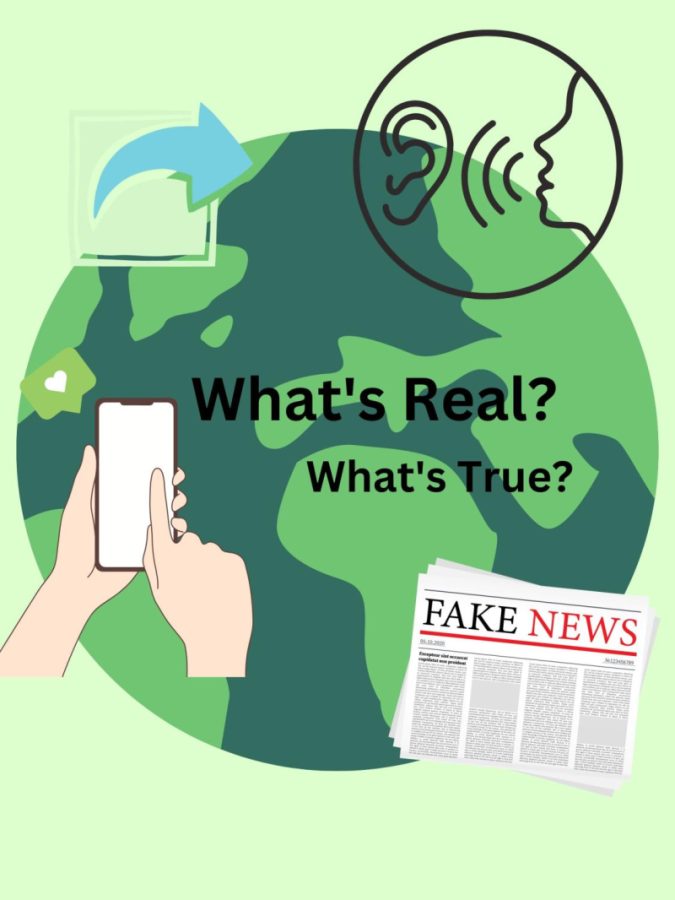Independent Media’s Transformation Into a Disarray of False News
Has the right to freedom of speech been taken too far?

With false news traveling at fast rates, it becomes extremely difficult to decipher what on social media is truly real.
The rise of free and independent media in recent years has been a powerful force for democracy, transparency, and accountability. However, as more people turn to these sources for news and information, some also use them to spread false or harmful narratives, sowing division and distrust in society.
The abuse of free media by higher authorities has become a growing concern in modern society. Freedom of the press is an essential aspect of any democratic society; it allows journalists to hold those in power accountable for their actions and ensures that the public is informed.
Hierarchies Drill Into Public Media
Well-positioned authorities abuse their power to suppress free media under numerous circumstances. In some cases, they do this by controlling the media outlets themselves, ensuring that only information that is favorable to them is reported. In other cases, they use threats and intimidation to silence journalists who report on issues that are critical of them. Former President of the United States, Donald Trump, repeatedly attacked the media during his time in office. President Trump frequently referred to established journalists as “fake news” and even went so far as to call the media “the enemy of the people”. This rhetoric not only undermined the credibility of the media but also created an environment in which journalists were threatened and harassed by Trump’s supporters.
In a more recent occurrence traced back to the government of Belarus, the authoritarian leader Alexander Lukashenko cracked down on independent media outlets and journalists who have been critical of his regime. According to the Committee to Protect Journalists, at least 27 journalists were detained in Belarus, and many more were threatened and harassed.
These examples are just the tip of the iceberg when it comes to the abuse of free media by higher authorities. The reality is that journalists all around the world face threats and intimidation every day, simply for doing their jobs and reporting on issues that matter to the public.
This abuse of power must be stopped. It is the responsibility of all of us to speak out against those who seek to silence the media and to ensure that journalists are free to report on issues that are waiting to be heard, and issues that must be heard without fear of reprisal.
AI-Generated Imaging Surfaces the Web
Besides just higher levels of authority, the ease with which images can be manipulated and altered has given rise to another new challenge in the media: AI-generated fake images. Using artificial intelligence algorithms, these images can be created to look incredibly realistic, making it increasingly difficult to distinguish fact from fiction in the media.
The use of AI-generated images has already caused significant harm in a number of cases in the past. In 2019, a fake image of a shark swimming on a flooded highway during Hurricane Dorian went viral on social media, leading to widespread panic and concern among residents in affected areas. Similarly, during the COVID-19 pandemic, fake images of celebrities and politicians purportedly receiving the vaccine circulated on social media, spreading false information about the efficacy and safety of the vaccine.
The problem with these images is that they can be used to manipulate public opinion and create a false narrative. For example, a fake image of a politician engaging in inappropriate behavior could be used to damage their reputation, even if the image is entirely fabricated.
Coming out of isolation and quarantine has contributed to much laziness, so when an opportunity surfaces for artificial intelligence to do your gossip for you and spread information you haven’t even double-checked, many won’t hesitate.
The challenge for the media is to identify and mitigate the impact of these fake images. One potential solution is to use AI technology itself to detect and flag fake images. Machine learning algorithms can be trained to identify patterns and anomalies in images that are not consistent with reality. This approach is already being used by some social media platforms, such as Twitter, which has implemented an image-cropping algorithm to prevent the spread of misleading images.
Another approach is to increase public awareness and education about the use of fake images in the media; this could include teaching individuals how to recognize fake images and providing guidelines on how to verify the authenticity of an image before sharing it on social media.
Ultimately, the solution to the problem of AI-generated fake images requires a multi-faceted approach. The media, technology companies, and the public, must work together to prevent the spread of false information in the digital age. The stakes are high, as the impact of these fake images can be far-reaching and very dangerous.
Misinformation Turns Into a Domino Effect
According to a recent report by the Reuters Institute for the Study of Journalism, social media platforms like Facebook and Twitter have become a key battleground for the spread of misinformation, with false stories and conspiracy theories often receiving more engagement than legitimate news articles. This is particularly concerning given the widespread use of these platforms. Facebook alone boasted over 2.9 billion monthly active users according to Statista, a database network that had recorded the number of monthly active users worldwide as of the 4th quarter of 2022.
The consequences of this abuse of free and independent media can be devastating. In India, false rumors spread on WhatsApp about child kidnappings led to mob violence and the deaths of at least 30 people in 2018. In Myanmar, social media was used to spread hate speech and incite violence against the Rohingya minority, leading to a mass exodus and a humanitarian crisis. In the United States, false claims about the 2020 election led to the storming of the Capitol building by supporters of then-President Donald Trump.
It’s not just social media that is being abused, however. Traditional media outlets are also vulnerable to manipulation and distortion, as seen in the recent scandal involving Fox News and its coverage of the 2020 election, and remain a prominent issue at any politically-given opportunity. The network’s hosts and guests promoted false claims of widespread voter fraud, despite no evidence to support such claims, contributing to the erosion of trust in the election process and the democratic institutions that rely on it.
Is it Possible to Reverse the Clock?
The responsibility to combat this abuse of free and independent media lies with all of us. As consumers of news and information, we must be vigilant about the sources we rely on and the information we share. We can support legitimate media outlets by subscribing to their services and sharing their articles, and we can report false or harmful content to social media platforms or news organizations.
But the responsibility also falls on those who create and disseminate news and information. Journalists must continue to uphold the highest standards of accuracy and integrity, and media outlets must take steps to combat the spread of misinformation and disinformation, whether by fact-checking articles or moderating user-generated content.
Ultimately, the health of our society depends on free and independent media that is trusted by the public. It’s up to all of us to ensure that this vital institution is not co-opted by those who would use it for their own nefarious purposes. By staying informed and working together, we can ensure that our media remains a trusted source of information for all.
Shannon Kavaja is currently a senior contributor to The Torch and has been contributing since her sophomore year when she was Editor-in-Chief. She has...










